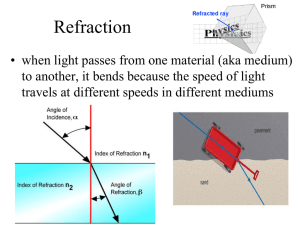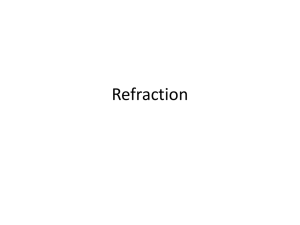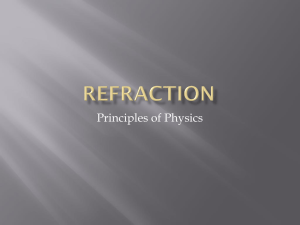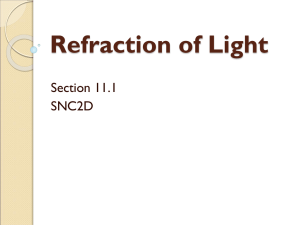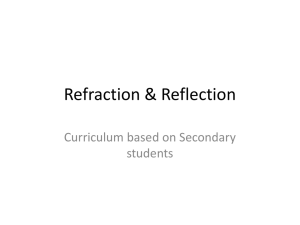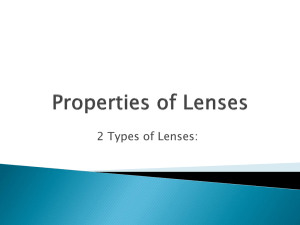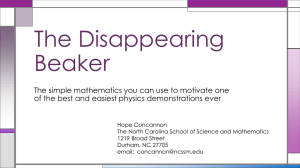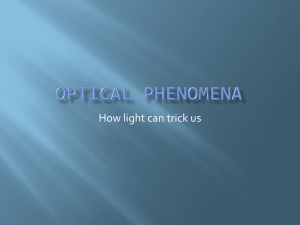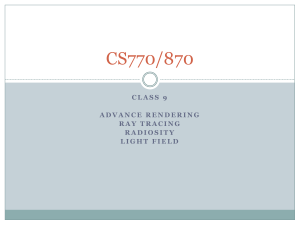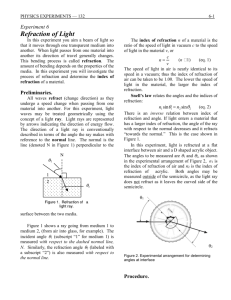Refraction of Light
advertisement
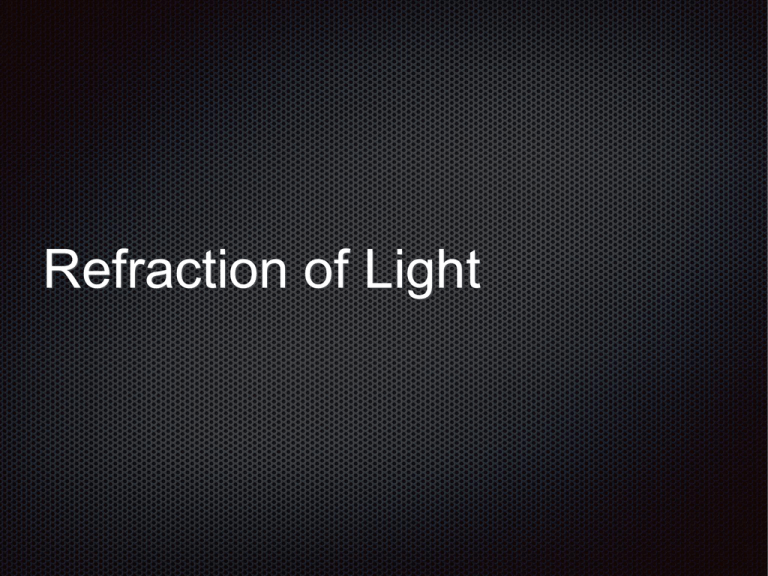
Refraction of Light Refraction of Light Refraction is the bending of light at the boundary of two transparent substances We sometimes call the transparent substances media Refraction causes the pencil to appear “bent” It also causes water to appear more shallow than it actually is Speed of Light in Different Media When a light ray moves from one medium into another, it changes speed example: speed of a light ray in water is less than the speed of a light ray in air The change in speed is what causes the light ray to bend We can predict what direction the light will bend in by looking at the index of refraction for the two materials Speed of Light in Different Media Medium Speed of Light (km/s) Index of Refraction (n) air 300 000 1.00 ice 229 000 1.31 liquid water 226 000 1.33 vegetable oil 204 000 1.47 glass 197 000 1.52 ruby 170 000 1.76 diamond 124 000 2.42 Drawing Ray Diagrams of Refraction When drawing a ray diagram of refraction, you must include the following: Incident ray: the light ray travelling through medium 1 toward the boundary Refracted ray: the light ray travelling away from the boundary through medium 2 Normal: a line perpendicular to the boundary between the two media, located where the incident ray strikes the second medium Angle of incidence: the angle between the incident ray and the normal Angle of refraction: the angle between the refracted ray and the normal Drawing Ray Diagrams of Refraction incident ray normal angle of incidence medium 1 (ex. air) boundary medium 2 (ex. water) angle of refraction refracted ray Rules of Refraction The rules of refraction describe what happens to light when it travels from one medium to another 1. When travelling from a “fast” (lower n value) medium into a “slow” (higher n value) medium, light bends toward the normal. 2. When travelling from a “slow” (higher n value) medium into a “fast” (lower n value) medium, light bends away from the normal. 3.The incident ray, refracted ray, and normal all lie in the same plane. The incident ray and the refracted ray are on opposite sides of the boundary between the two media, and on opposite sides of the normal. Phenomena Related to Refraction Apparent Depth The depth that an object in water appears to be shallow due to the refraction of light. Apparent Depth Objects in water appear to be closer than what they actually are. A fish will be deeper in the water than it appears to be. Why?? Your brain projects the light rays backwards in a straight line to create a virtual image in the water. Virtual Images and Apparent Depth The virtual images projected by our brains are shallower than they actually are…. apparent vs. actual depth. Questions: 1. What does refraction mean? 2. Why does light bend when it travels between two different mediums? 3. If light travels from a more dense to a less dense medium, will it bend towards or away from the normal? Include a diagram. 4. If light travels from a less dense to a more dense medium, will it bend towards or away from the normal? Include a diagram. 5. What do we mean by apparent depth? Why does this occur? Draw a diagram to help explain.
